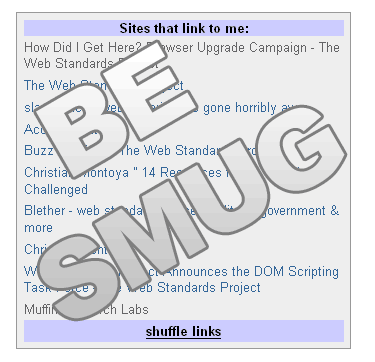Web Standards Group Meeting London
Saturday, July 15th, 2006As some people asked me for them yesterday at the Web Standards Group Meetup London here are my slides on Maintainable JavaScript.
I took some out as they don’t make much sense without me monkeying around on stage and the others will be in the podcast that’ll be out some time later. I didn’t have any notes, but ad-libbed the lot so that’s all there is.
Thinkvitamin will release an article next week on the subject which will be a lot more hands-on and tell you what you can do to make your JavaScript more maintainable.
It was a lot of fun, and I hope to see some of the people I met at the next meeting. A big thanks to Stuart for organising and endangering all participants by allowing me on stage. Check out the flickr stream to see the crowd.
